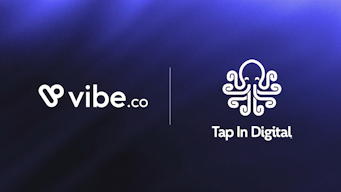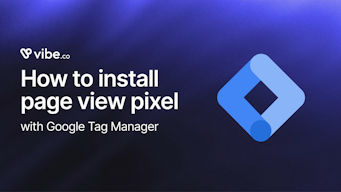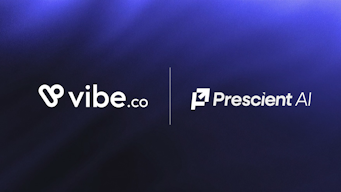What is User Acquisition Management in Marketing?
Your app may be useful, beautiful, convenient, and relevant, and still not manage to take off. That’s hardly surprising as the number of new apps battling for user attention is nothing short of staggering. That means user acquisition no longer comes down to sheer luck, to offering the right thing at the right time, or even to being the only one to offer a particular feature. This is where the right customer acquisition strategy can make all the difference. Here is everything you need to know about the challenges of user acquisition and how to overcome them in 2022.
Definition of User Acquisition
Also known as UA for short, User Acquisition is the process through which a mobile app business acquires new customers or users. To achieve this goal, advertisers should consider several methods including paid media marketing, app store optimization, owned media marketing, social media campaigns, OTT advertising campaigns, and more.
The difficulty lies in identifying the right set of tools to create a user acquisition strategy that will catch the attention of the right audience at the right time, within the limits of your budget.
Why is User Acquisition Important?
One of the main objectives for any business coming out with an app is growth, either of the app itself or of their overall brand as a result of people using the app. Within that paradigm, user acquisition can be viewed as the best way to maximize your value. This is all the more important for those who subscribe to the freemium model and therefore need to count on ad revenue and in-app purchases.
In addition, users interpret high numbers as a vote of confidence and are more likely to install an app that they see other people enjoying. With that said, many also stop using the apps they install very quickly or uninstall them altogether. Which is why retaining users can be as important as attracting them in the first place. A good way to integrate this into your customer acquisition strategy is to consolidate your approach through retargeting and re-engagement campaigns.
User acquisition efforts can make up for this natural decline in organic activity and boost your app store rankings and installs which, in turn, will win you the favors of the store algorithms. In other words, while a user acquisition strategy is often geared toward driving non-organic installs, it will likely increase your reach and your number of organic installs as well. Ultimately, this will result in even a greater quantity of high-quality traffic and more organic users.
What are the most common challenges of user acquisition?
There is no one size fits all when it comes to developing an effective user acquisition strategy. Understanding your market is the first step toward creating a powerful UA strategy, as well as driving down cost: the greater the number of new installs directly related to your campaign, the lower the cost per acquisition!
While targeting your UA approach correctly is an absolute must, you may find yourself dealing with challenges inherent to the mobile marketing ecosystem, complicating matters even further. Many platforms lack transparency, for instance, which makes segmenting users a very complex task.
How to measure customer acquisition?
To manage your user acquisition rate, it’s important to take several metrics into consideration.
- Customer Acquisition Cost, or CAC, for instance, corresponds to the total cost of sales and marketing activities divided by the number of users acquired over a given period. For results to reflect the effectiveness of a strategy reliably, advertisers need to take every detail into account. By understanding their user acquisition cost, i.e. how much acquiring a new customer costs, advertisers can then work toward improving your ROI by lowering the metric. In addition to user acquisition costs, advertisers may also want to look at your customer churn rate.
- This essentially describes the percentage of users who have lost interest in an app within a certain amount of time. If the value is high, it could indicate that you are not targeting the right type of users, since their initial enthusiasm is only short-lived. More worrisome – yet not to be dismissed – is the concern that the app itself is not on par with the users’ expectations, even if they are targeted correctly.
- CLV – or Customer Lifetime Value – will show you the value of a single user from the moment they take an interest in your app up to the time they decide to uninstall it for good.
- The click-through rate (CTR) and conversion rate will give you an idea of how successful your marketing campaigns are.
Customer acquisition methods
There are three main categories of user acquisition methods that can be used individually or in combination.
Paid Media Marketing
Paid media marketing, when done correctly, is a great way to up your user acquisition rate. It consists in using media channels to display direct response ads designed to boost app installs. Examples include banners, targeted posts, and social media adds.
Even more effective, CTV and OTT ads can be targeted to reach just the right people at exactly the right time, with the ideal ad creative, making conversion more likely - and more trackable.
Owned Media Marketing
Owned media marketing utilizes your own marketing assets to gain the interest of new users and improve the loyalty of existing ones. Instead of paying for exposure, the idea is to create user acquisition campaigns based on what you already have at your disposal.
For example, if you already have a website with a certain number of visitors, you could incentivize them to give your app a try. If you have users on the app and are trying to convince more to join, you could create a reward system for users who encourage their friends to sign up, etc.
App Store Optimization
ASO – or App Store Optimization – aims to boost your user acquisition rate organically by working on your ranking in the app store result. An in-house UA manager can always optimize your app’s store page by being more intentional about its headline, description, keywords, and other elements that impact your positioning. You could also turn to an external ASO agency to put together a more thorough campaign.
How well does customer acquisition work?
As long as you plan your user acquisition strategy based on the right target audience and on the best ways to approach it, the method holds a lot of potential. Building a wider customer base is the very heart of success for most businesses since it is the most direct way to increase revenue. User acquisition management happens to be one of the surest ways to get results.
What are the best strategies for user acquisition?
This may sound like something of a cliché, but there isn’t one ideal user acquisition strategy, only the strategy that works for you. With that said, it always makes sense to analyze your market as thoroughly as possible and to go with what your ideal audience is most likely to respond to. That is why CTV and OTT content in general offer such great results, since these options give you the flexibility to pursue very specific goals.
Don’t be shy about studying your audience or to try out a strategy on a small scale while keeping an eye on real-time data. This will allow you to make calculated moves, striking where, when, and how you know your actions will generate the best results.


